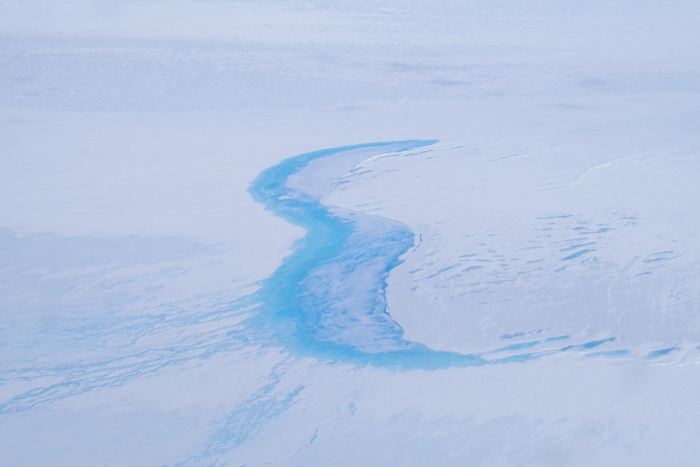The area and volume of surface meltwater lakes are highly variable year after year, finds a first-ever study looking at surface meltwater lakes near the East Antarctic Ice Sheet over seven years. This study offers a new understanding of the possible impact of recent climatic change on the “Frozen Continent.”
 Meltwater lake near Shackleton Ice Shelf, East Antarctica. Image Credit: David Small, Durham University.
Meltwater lake near Shackleton Ice Shelf, East Antarctica. Image Credit: David Small, Durham University.
The study headed by Durham University (UK), utilized more than 2000 satellite images from around the edge of the East Antarctic Ice Sheet to identify the size and volume of lakes on the ice surface, also called supraglacial lakes, throughout seven sequential years between 2014 and 2020.
The study, involving Newcastle and Lancaster universities and the Georgia Institute of Technology, displayed that lake volume altered year-on-year by as much as 200% on separate ice shelves (floating extensions of the primary Antarctic ice sheet), and by around 72% on the whole.
Also, lakes were discovered to be bigger and deeper in warmer melt seasons and developed on some possibly susceptible ice shelves.
This study has illustrated that is the first time that meltwater lakes have been studied over subsequent melt seasons throughout the entire ice sheet, thereby allowing the controls on their development to be examined.
The study has been recently reported in the Nature Communications journal.
Thus, the study offers crucial insight into why and where lakes tend to grow, and will also help experts comprehend which ice shelves might be majorly at risk of breaking up as a result of surface melting.
We knew that supraglacial lakes were more extensive than previously thought around the East Antarctic Ice Sheet, but until now only had snapshots of these in some years. Our study reveals these lakes change in scale far more than we originally suspected. We were surprised at how much lakes can change year-to-year between ice shelves.
Jennifer Arthur, Study Lead Researcher and PhD Student, Department of Geography, Durham University
Arthur continued, “We explored the potential reasons for this and found that warmer summer air temperatures in Antarctica correlated with more extensive lakes.”
“Due to climate change, air temperatures in Antarctica will continue to rise and our study suggests that this will lead to an increase in the number and volume of supraglacial lakes, which will in turn put some East Antarctic ice shelves at risk of meltwater-driven collapse,” added Arthur.
The East Antarctic Ice Sheet is considered to be the world’s biggest ice mass and retains sufficient ice to increase global sea levels by around 52 m.
The loss of ice shelves bordering an ice sheet enables ice further inland to flow quickly into the ocean, thereby contributing to the global increase in sea level.
Until this study, observations of supraglacial lakes on the East Antarctica Ice Sheet were comparatively short in supply and the year-to-year variability was unknown.
This makes it hard to evaluate if some ice shelves are close to meltwater-driven break up as a result of climate change.
This study will help experts comprehend supraglacial lake formation and climatic impacts on this and forecast which ice shelves might be at the risk of collapse.
Comprehending the climatic conditions, and regulating meltwater lake variability will also help to enhance the precision of regional climate models utilized to replicate observations and forecast ice sheet change in Antarctica in the future.
The images from the Landsat 8 satellite were utilized in this study. This study was financially supported via a UKRI Natural Environment Research Council doctoral studentship and separate author grants from the Natural Environment Research Council.
Journal Reference:
Arthur, J. F., et al. (2022) Large interannual variability in supraglacial lakes around East Antarctica. Nature Communications. doi.org/10.1038/s41467-022-29385-3